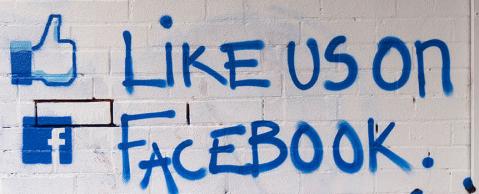
If you had told a marketer in the mid-1990s that ‘search engine optimisation’ and ‘cookies’ would one day be standard marketing terms, they might have laughed. If you’d then added that the likes of Facebook, Twitter and Spotify would also topple TV when it came to the platform of choice for advertising campaigns, the laughter would likely have turned to horror.
From organisation to commoditisation
Marketing’s digital transformation all began with a search solution. Long before it became a highly competitive, personalised and complex way of connecting users with more relevant and valuable content, the internet was just an indexing system to help organise data.
By the early 2000s, search giants like Google were starting to implement the rules on the internet that are still in place today. With brands using keyword stuffing (external link) and bad linking (external link) to jump up in search rankings, Google penalised these kinds of practices.
As the need to protect reputation online grew, Hiscox adapted its offering to become the first insurer to create specific professional indemnity policies for agencies working in the digital world. This includes special cover for SEO or insurance for firms offering analytics into digital marketing performance
Another critical milestone in the commoditisation of the internet was personalised search. Based on user history and location, SEO helped connect users to information near them such as maps, destinations and opening hours.
By 2008, Google introduced suggested search options and analytical tools, Google Trends and Google Analytics. By 2013, shareability became an influential factor in rankings, the speed of search increased dramatically and search history, location and the device used all helped drive more personalised results for users.
How did the cookie crumble?
No history of digital marketing would be complete without mention of the venerable cookie. These bitesize text files have been around almost as long as the internet itself. Cookies reside on your computer with information that is then accessed by servers of websites you visit, enabling them to identify you and remember things about you.
Debate on the safety and security of cookies entered the public domain in the mid 1990s after media reports on their threat to privacy. Today some 95% of websites use cookies, according to DigitalTrends.com (external link), mostly for invisible tasks such as ensuring a website responds quickly or counting visitors.
From 2011, the EU implemented law that meant website owners must now tell visitors about cookies and obtain their consent. As part of its digital services cover, Hiscox offers unique protection for companies in analytics and digital insights, as well as those that manage social media accounts or websites for clients.
Jumping off the page
Aside from government and charity websites, you’ll be hard pushed to find any digital content that doesn’t also feature brands jumping off the page for your attention. The first banner advertisement was commissioned by AT&T in 1994. With an astonishing 44% click-through rate, it wasn’t long before other companies rushed to follow suit.
Banners continued to gain popularity, with a focus on targeting certain demographic and minimising the number of times a user sees one to avoid banner fatigue.
In the late 1990s, the much maligned ‘pop-up’ advert was making itself known. However, by the early 2000s, it was standard for web browsers to come with pop-up blocking features as click-through rates dwindled. Search and pay-per-click services, both of which are covered under Hiscox protection for digital services, followed.
In recent years, marketers have aimed to create a less interrupted user experience by deploying targeted social network advertising; native advertising (where brands seek to match the advert with the form and function of the platform it’s appearing on); embedded advertising (where brands pay for their products to appear in movies, on television or in video games); and sponsored content.
Sale of the century
The internet has changed many industries beyond recognition in the past couple of decades, but few have shifted as drastically as digital marketing. So what were the technological innovations that made this brave new, multi-channel world of targeted promotions possible?
1994 – The web version of Wired magazine, then known as HotWired, hosts the world’s first ever banner ad.
1995 – Microsoft debuts Internet Explorer 1.0, which can render basic HTML, but little else. Version 2.0 released later in the same year was the first iteration to support browser cookies.
2000 – Broadband launches in the UK.
2002 – Google Adwords introduces a new pay-per-click payment option for advertising on its search results. The new system also uses ad relevance, measured by click-through rate, for ranking – maximising revenue and the search experience.
2006 – Social media is firmly entrenched and begins to reinvent how marketers approach customers thanks to the launch of Twitter and the growth of LinkedIn to 20 million members. YouTube is bought by Google for $1.65 billion.
2010 – Apple’s mobile advertising platform iAd allows third-party developers to directly embed advertisements into their applications.
2012 – Facebook launches mobile adverts on the Facebook mobile app, used by over half of the site’s 850 million users.
2015 – Live video streaming becomes the latest trend to take social media by storm after both Facebook and Twitter launch livestreaming capabilities.
2017 – Forecasters expect immersive video to gain traction this year, after both Facebook and YouTube have launched 360-degree video that lets you glimpse action from all angles. Considering their popularity on social media, expect to see brands get involved with live video, along with increased personalisation courtesy of clever data collection, already used by Amazon, Spotify and Netflix.